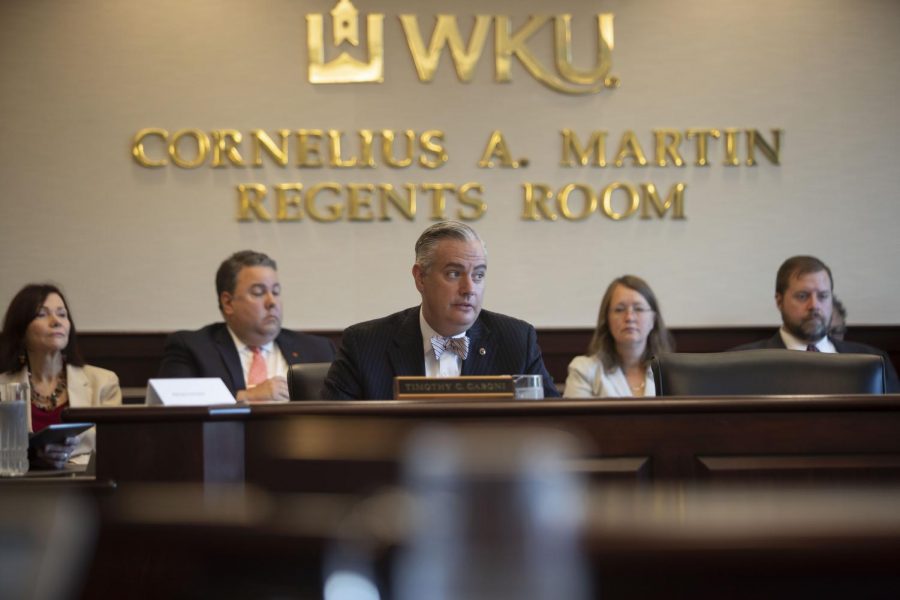Board of Regents agenda shows tuition increase, $7.8 million budget shortfall for upcoming fiscal year
President Timothy Caboni speaks on the university’s 2018-2028 strategic plan, which was unanimously approved by the Board of Regents during its meeting on Friday.
April 30, 2021
WKU faces a $7.8 million budget shortfall in 2021–22, and intends to impose a 2% increase in tuition, according to an agenda for the board of regents that was released Friday.
The Regents will meet at 9 a.m. on May 7 for their second quarterly meeting of the year. On the agenda are several certificates approvals from the Academic Affairs Committee, a six-year capital plan from the Executive Committee, updates from President Timothy Caboni and the 2020-21 Operating Budget approval from the Finance and Budget Committee.
The Finance and Budget Committee are also presenting “FY 2022 Budget Development Update,” which has been worked on since November 2020, according to the agenda. In this update, the Budget Executive Committee is recommending a 2% tuition increase dependent on recommendations from the Council of Postsecondary Education.
“Increasing tuition is never taken lightly, however, in a time of historically declining or flat state support, the Committee recognizes that the institution must consider an increase,” the agenda stated.
Additionally, the agenda from the Finance and Budget Committee indicated there will be a $7.8 million budget shortfall for fiscal year 2022. The Budget Executive Committee recommends reduction targets of $4.2 million, or 54% of the shortfall, for Academic Affairs and $3.6 million, or 46% of the shortfall, for Administrative Support Units, according to the agenda.
“These targets will be managed by the respective Dean or Vice President,” the agenda stated. “The targets can be addressed through a multitude of ways including operational spending reductions, travel reductions, lapse personnel dollars, strategic hiring pauses, etc.”













